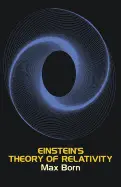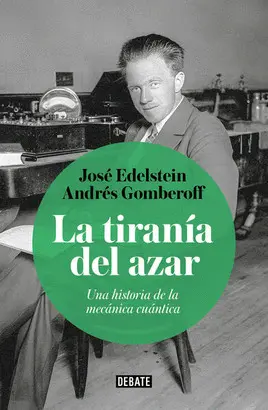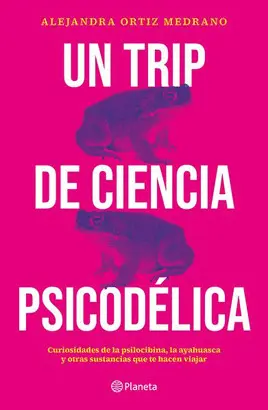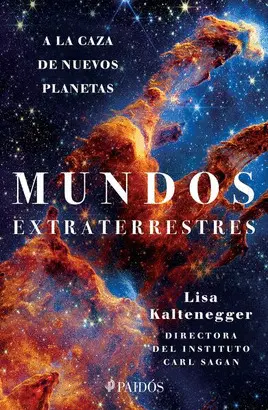- Editorial:
- DOVER
- Materia:
- Ciencia - STEM
- ISBN:
- 978-0-486-60769-6
EINSTEIN'S THEORY OF RELATIVITY (REV)
MAX BORN
Marc Notes:
This new Dover edition, first published in 1962, is a revised and enlarged version of the work published by Methuen Company in 1924..
Table of Contents:
INTRODUCTION
CHAPTER I. GEOMETRY AND COSMOLOGY
1. The Origin of the Art of Measuring Space and Time
2. Units of Length and Time
3. Origin and Coordinate System
4. The Axioms of Geometry
5. The Ptolemaic System
6. The Copernican System
7. The Elaboration of the Copernican Doctrine
CHAPTER II. THE FUNDAMENTAL LAWS OF CLASSICAL MECHANICS
1. Equilibrium and the Concept of Force
2. The Study of Motion?Rectilinear Motion
3. Motion in a Plane
4. Circular Motion
5. Motion in Space
6. Dynamics?The Law of Inertia
7. Impulses
8. The Effect of an Impulse
9. Mass and Momentum
10. Force and Acceleration
11. Example?Elastic Vibrations
12. Weight and Mass
13. Analytical Mechanics
14. The Law of Energy
15. Dynamical Units of Force and Mass
CHAPTER III. THE NEWTONIAN WORLD SYSTEM
1. Absolute Space and Absolute Time
2. Newton's Law of Attraction
3. Universal Gravitation
4. Celestial Mechanics
5. The Relativity Principle of Classical Mechanics
6. Limited Absolute Space
7. Galileo Transformations
8. Inertial Forces
9. Centrifugal Forces and Absolute Space
CHAPTER IV. THE FUNDAMENTAL LAWS OF OPTICS
1. The Ether
2. The Corpuscular and the Undulatory Theory
3. The Velocity of Light
4. Elements of the Wave Theory?Interference
5. Polarization and Transversality of Light Waves
6. The Ether as an Elastic Solid
7. The Optics of Moving Bodies
8. The Doppler Effect
9. The Convection of Light by Matter
10. Aberration
11. Retrospect and Further Development
CHAPTER V. THE FUNDAMENTAL LAWS OF ELECTRODYNAMICS
1. Electro- and Magnetostatics
2. Voltaic Electricity and Electrolysis
3. Resistance and Heat of Current
4. Electromagnetism
5. Faraday's Lines of Force
6. The Electrical Displacement Current
7. Magnetic Induction
8. Maxwell's Theory of Action by Contact
9. The Electromagnetic Theory of Light
10. The Electromagnetic Ether
11. Hertz's Theory of Moving Bodies
12. The Electron Theory of Lorentz
13. Electromagnetic Mass
14. Michelson and Morley's Experiment
15. The Contraction Hypothesis
CHAPTER VI. EINSTEIN'S SPECIAL PRINCIPLE OR RELATIVITY
1. The Concept of Simultaneity
2. Einstein's Kinematics and Lorentz's Transformations
3. Geometrical Representation of Einstein's Mechanics
4. Moving Measuring Rods and Clocks
5. Appearance and Reality
6. The Addition of Velocities
7. Einstein's Dynamics
8. The Inertia of Energy
9. Energy and Momentum
10. Optics of Moving Bodies
11. Minkowski's Absolute World
CHAPTER VII. EINSTEIN'S GENERAL THEORY OF RELATIVITY
1. Relativity in the Case of Arbitrary Motions
2. The Principle of Equivalence
3. The Failure of Euclidean Geometry
4. Geometry on Curved Surfaces
5. The Two-dimensional Continuum
6. Mathematics and Reality
7. The Metric of the Space-Time Continuum
8. The Fundamental Laws of the New Mechanics
9. Mechanical Inferences and Confirmations
10. Predictions of the New Mechanics and Their Confirmations
11. Optical Deductions and Confirmations
12. Cosmology
13. The Unified Field Theory
14. Conclusion
INDEX
Publisher Marketing:
A book in which one great mind explains the work of another great mind in terms comprehensible to the layman is a significant achievement. This is such a book. Max Born is a Nobel Laureate (1955) and one of the world's great physicists: in this book he analyzes and interprets the theory of Einsteinian relativity. The result is undoubtedly the most lucid and insightful of all the books that have been written to explain the revolutionary theory that marked the end of the classical and the beginning of the modern era of physics.
The author follows a quasi-historical method of presentation. The book begins with a review of the classical physics, covering such topics as origins of space and time measurements, geometric axioms, Ptolemaic and Copernican astronomy, concepts of equilibrium and force, laws of motion, inertia, mass, momentum and energy, Newtonian world system (absolute space and absolute time, gravitation, celestial mechanics, centrifugal forces, and absolute space), laws of optics (the corpuscular and undulatory theories, speed of light, wave theory, Doppler effect, convection of light by matter), electrodynamics (including magnetic induction, electromagnetic theory of light, electromagnetic ether, electromagnetic laws of moving bodies, electromagnetic mass, and the contraction hypothesis). Born then takes up his exposition of Einstein's special and general theories of relativity, discussing the concept of simultaneity, kinematics, Einstein's mechanics and dynamics, relativity of arbitrary motions, the principle of equivalence, the geometry of curved surfaces, and the space-time continuum, among other topics. Born then points out some predictions of the theory of relativity and its implications for cosmology, and indicates what is being sought in the unified field theory.
This account steers a middle course between vague popularizations and complex scientific presentations. This is a careful discussion of principles stated in thoroughly acceptable scientific form, yet in a manner that makes it possible for the reader who has no scientific training to understand it. Only high school algebra has been used in explaining the nature of classical physics and relativity, and simple experiments and diagrams are used to illustrate each step. The layman and the beginning student in physics will find this an immensely valuable and usable introduction to relativity. This Dover 1962 edition was greatly revised and enlarged by Dr. Born.








